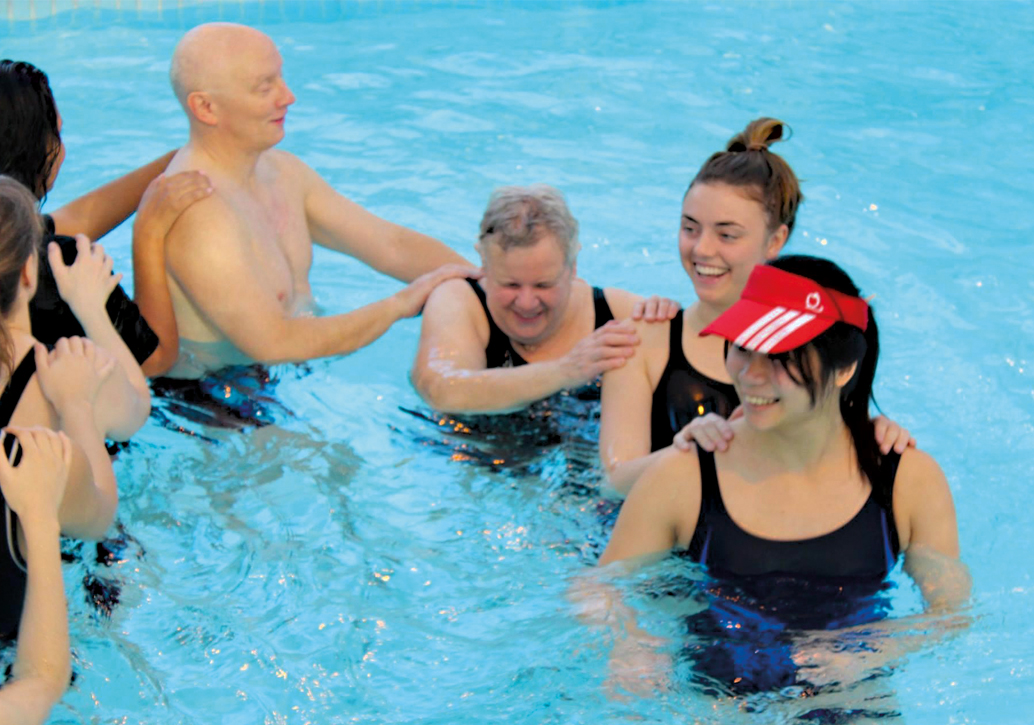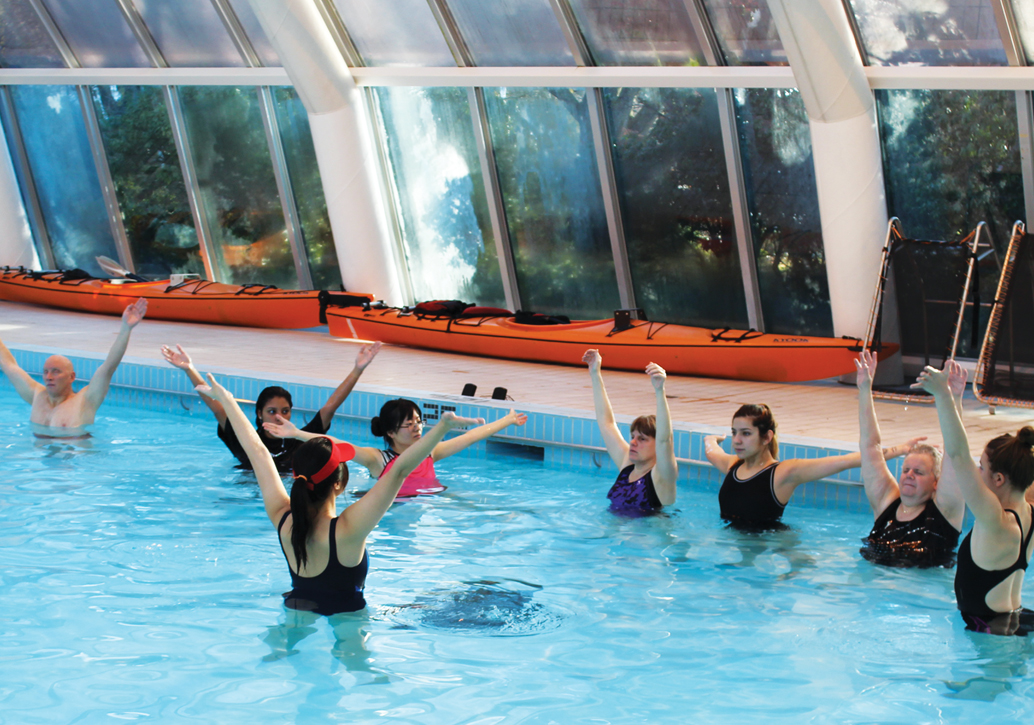The first adapted aquafit class for people with visual impairment in Canada
By Minnie Teng
As a person with a visual disorder, I started volunteering as a support counsellor for people undergoing vision loss in their 60s. Many of our clients were upset that they could no longer engage in physical activities that were suitable for them. I encouraged many clients to connect with the BC Blind Sports and Recreation Association, a local adapted blind sports group, but soon discovered that the organization did not have lower-impact programs that were suitable for older individuals. I am a water aerobics instructor, and I therefore suggested water aerobics and was surprised at the number of people who were interested in participating. So, working with a group of seniors as well as with BC Blind Sports, we gathered resources and searched for pools, lifeguards and grants, and fundraised to start an adapted blind aquafit program. After a year of collaboration and persuading various stakeholders, we started Aqua Vision; the first such program in Canada—community-built for people with visual impairments, by people with visual impairments. We have learned valuable lessons about aquafit accessibility, and the importance of understanding that each person is unique. So, let me bust some myths about visual impairments!
support counsellor for people undergoing vision loss in their 60s. Many of our clients were upset that they could no longer engage in physical activities that were suitable for them. I encouraged many clients to connect with the BC Blind Sports and Recreation Association, a local adapted blind sports group, but soon discovered that the organization did not have lower-impact programs that were suitable for older individuals. I am a water aerobics instructor, and I therefore suggested water aerobics and was surprised at the number of people who were interested in participating. So, working with a group of seniors as well as with BC Blind Sports, we gathered resources and searched for pools, lifeguards and grants, and fundraised to start an adapted blind aquafit program. After a year of collaboration and persuading various stakeholders, we started Aqua Vision; the first such program in Canada—community-built for people with visual impairments, by people with visual impairments. We have learned valuable lessons about aquafit accessibility, and the importance of understanding that each person is unique. So, let me bust some myths about visual impairments!
Myth 1: People who are legally blind do not see anything
This is a common myth. Most people with a visual impairment have some remaining sight. For example, they might be able to detect light, shape or movement.
Myth 2: Visual impairment is always a visible disability
A white cane or guide dog are often seen as identifiers that label an individual. However, not all people with visual impairments require these means of assistance. For example, I have intermittent strabismus that occurs early in the morning or late in the evening. Often when I tell people about my condition, they say “But you look normal!” It is important to understand that people who are visually impaired may have an invisible condition that sometimes flares, but is not necessarily present all the time.
Myth 3: Aquafit is suitable for older adults; no adaptations or modifications are required
Seniors with disabilities or injuries often have difficulty attending regular aquafit classes. In particular, mainstream aquafit may not be accessible for those with vision loss, even though they would greatly benefit from it.
Adaptations
The following adaptations can be easily implemented to increase visual accessibility in any activity in a group setting.
Use non-slip mats: Putting a non-slip mat under each participant’s feet helps to prevent disorientation. They are able to feel the mats under their feet and still move about freely. The non-slip mats would be positioned at arm’s length between participants so that they can move both on and around the mat.
Give a descriptive narration of movements: Describing the movements in detail is key. Avoid visual references such as “Move your hands like this” or “Go that way!” Instead, use specific directions such as “Now, cross your left leg over your right leg.”
Wear bright clothing or a headband or cap: Most individuals with visual impairments are not totally blind, so wearing a bright cap helps participants with limited eyesight to locate the instructor more easily.
Minnie Teng is an occupational therapy student at the University of British Columbia. She is the founder of the non-profit Aquafit for All Association, which provides accessible aquatic exercises for people with injuries or disabilities.













